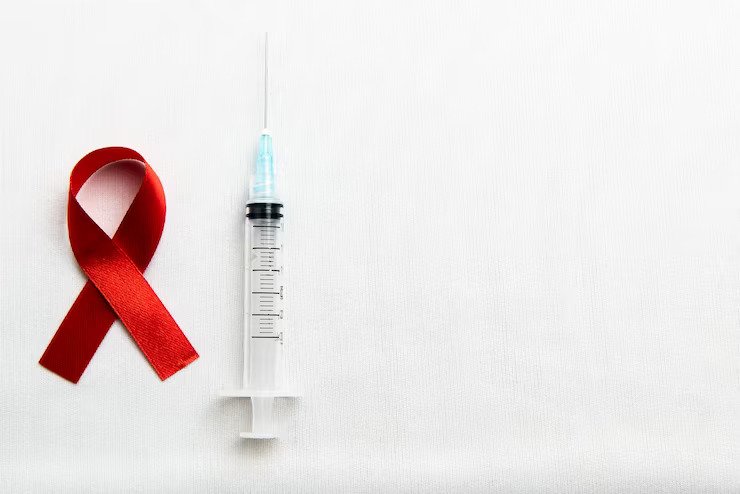Preventive Healthcare
HIV & AIDS: Overview, Symptoms, Treatment, Differences & Prevention
4890 Views
0

What is HIV?
Understanding what HIV is is important for understanding the difference between HIV & AIDS. There are two main types of HIV: HIV-1 and HIV-2.
HIV-1 is the most common form of the virus and is responsible for the majority of HIV infections worldwide. HIV-2 is found primarily in West Africa and is not as widely spread as HIV-1.
Most people who are infected with HIV will develop AIDS, but some people can live for many years without developing any symptoms. This is because they have a strong immune system that can keep the virus under control.
There are many different ways that you can contract HIV, including through sexual contact, sharing needles, or being born to a mother who has HIV. If you think that you may have been exposed to HIV, it’s important to get tested right away so that you can start treatment if necessary.
What is AIDS?
There is a lot of confusion surrounding the difference between HIV infection and AIDS. To put it simply, HIV is a virus that can lead to AIDS. AIDS is the most advanced stage of infection with HIV. People with AIDS have such severely damaged immune systems that they are vulnerable to opportunistic infections and cancers, which can be deadly.
With advances in treatment, however, many people with AIDS now live long, healthy lives. It’s important to remember that there is no one “face” of AIDS – people of all ages, genders, races, and sexual orientations can be affected by the virus.
There is no cure for AIDS, but there are treatments available that can prolong a person’s life. In some cases, these treatments can even lead to what is known as remission, where the virus is undetectable in the body for an extended period. Continue reading to understand the difference between HIV infection and AIDS.
The Difference Between HIV Infection And AIDS
It is important to know the difference between HIV infection and AIDS so that you can understand your risk, get the proper treatment, and protect yourself and others.
Most people who are infected with HIV are unlikely to develop AIDS. With early diagnosis and treatment, many people living with HIV will not experience any health problems or only mild ones. However, if HIV is not diagnosed and treated early, it can progress into AIDS, which can lead to serious health problems and death.
You can have HIV for years without knowing it because there may be no symptoms. That's why it's important to get tested for HIV if you think you may have been exposed to the virus. An HIV test can tell if you have the virus in your body. There is no cure for HIV, but there are treatments that can keep you healthy for many years. We hope we have made the difference between HIV infection and AIDS clear.
Symptoms of HIV
Now that we know what's different between HIV and AIDS, let's take a look at the common symptoms.
-Fever
-Chills
-Sweating
-Headache
-Muscle aches and pains
-Joint pain
- Fatigue
-Swollen lymph nodes
-Rash
-Night sweats
-Weight loss
How to Prevent HIV Infection?
There are many ways to prevent HIV infection. The most important thing you can do is to get tested and know your status. If you are positive, you can take steps to keep yourself healthy and avoid infecting others.
If you are negative, there are steps you can take to stay that way. Use condoms every time you have sex, and don’t share needles or other drug-injection equipment. You can also get a vaccine to protect yourself from HIV infection.
How to Prevent AIDS?
There is no easy answer to how to prevent AIDS, but there are many things you can do to lower your risk. One of the most important things you can do is get tested and know your HIV status. If you are HIV-positive, you can take steps to keep yourself healthy and prevent transmitting the virus to others. This includes taking antiretroviral medications and getting regular checkups.
If you are pregnant or thinking about becoming pregnant, get tested for HIV and talk to your healthcare provider about ways to prevent transmission to your baby.
Treatment For AIDS
There is no one-size-fits-all approach to treating AIDS, as the virus can affect people in different ways. However, there are a number of treatments available that can help people with AIDS to manage their symptoms and improve their quality of life.
The most common treatment for AIDS is antiretroviral therapy (ART), which involves taking a combination of drugs that work to suppress the virus and prevent it from replicating. ART can be effective in reducing the viral load to undetectable levels, which can improve immune function and delay the onset of AIDS-related illnesses.
Other treatments for AIDS include prophylactic measures to prevent opportunistic infections, such as pneumocystis pneumonia (PCP) prophylaxis and herpes simplex virus (HSV) prophylaxis; and medications to treat specific symptoms, such as pain relief for Kaposi's sarcoma lesions. There is also a growing body of research into alternative therapies for AIDS, such as acupuncture and traditional Chinese medicine.
Conclusion
In conclusion, it is important to know the difference between HIV infection and AIDS. HIV is a virus that attacks the body's immune system and can eventually lead to AIDS. However, you can live with HIV for many years without developing AIDS. AIDS is the most advanced stage of HIV infection, and it can be deadly if not treated properly. There are treatments available that can prolong a person's life, but there is no cure for AIDS at this time. Visit your nearest Metropolis diagnostics to get accurate results for your HIV tests. Once you get your results, you will have a much clearer idea about the difference between HIV and AIDS, as well as the treatment you need to seek.























 WhatsApp
WhatsApp
